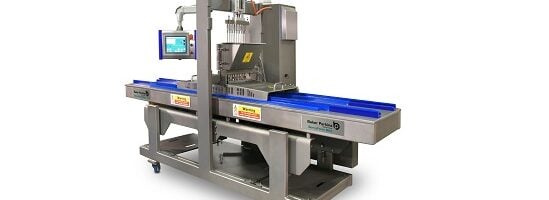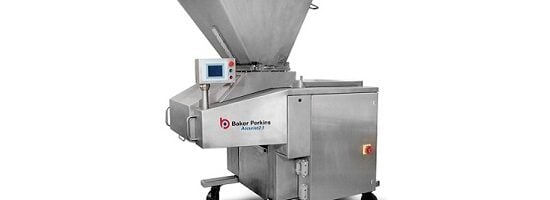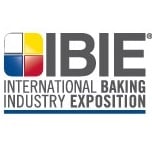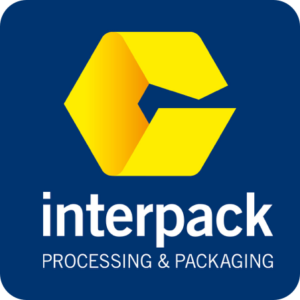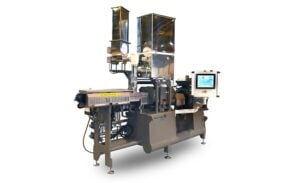
Baker Perkins has developed a new range of High Power twin-screw extruders delivering superior outputs on powder coating and specialist chemical applications from a smaller barrel, with reduced cost of ownership and machine down time.
Increased power and speed are the key attributes of the new HPX45 extruder, achieved by full utilisation of an 83kW motor through torque stability provided by the patented MAX³ feed system, and increased thrust capacity of the solid-shaft drive train.
The HPX45 provides an average output of 750kg/hour, rising to 1,200kg/hour on specific applications – typically 20% higher than an MPX50 machine.
A full range of HPX extruders is being developed; the MPX series will be retained for powder coating applications requiring through shaft cooling.
The HPX45 extruder handles a full range of powder coatings and toners including the most intensive formulations; it is aimed at the small to medium batch market producing 300-800kg/hr of product, ideally suiting 100kg to 1,500kg batches.
The HPX retains all the latest features of the MPX range. As well as the MAX³ feed system these include a hi-cool barrel increasing efficiency and allowing lower melt temperatures; a split stuffing box for increased access; a pivoting main feeder for easier calibration and emptying; and purge feeders for quicker turnaround between batches. Noise is minimized by using water cooled main drive motors; a hi-cool discharge adaptor and non-stick coating minimise product hang-up at discharge.
MAX³ benefits
The MAX³ feed system incorporates a fundamental re-design of the intake feed port and screws. It improves the flow of material into the extruder barrel and air out of it to eliminate material build up in the extruder infeed that leads to restricted output and torque surges.
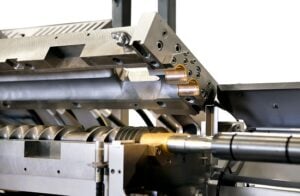
The system brings proven 40 to 100% throughput benefits; top feeding creates improvements in operation that significantly reduce cost-of-ownership.
Side feeders force product into the screws, causing high levels of wear and the frequent cost of replacement. The process creates heat which can affect quality through pre-melt of resin on the screws, which causes loss of conveying capacity and is also a quality issue.
In contrast, top feeding directs material into the process section of the extruder, without pressure. There is minimal screw wear, no heat build up, no pre-melt and no quality problems. A major benefit is that lightweight, low density materials are now handled more efficiently.
State-of-the-art controls and Industry 4.0 Ready
State-of-the-art control features a touch-screen HMI developed specifically for the complete range of Baker Perkins extruders.
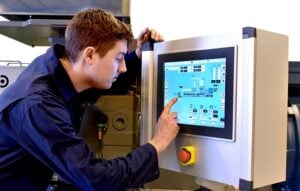
This provides clear, at-a-glance visualisation of the process, including current status of all major components and parameters. Options include systems integration of upstream and downstream equipment into a single control point for the line.
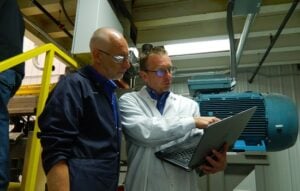
All Baker Perkins equipment is supplied Industry 4.0 Ready. This harnesses data from all the machines, devices and sensors in any manufacturing operation and enables them to communicate with each other via the Internet to make informed and timely decisions. Alarm management and date gathering are included.
Complete line capability
In addition to the extruder, a complete process line comprises ingredient weighing and feeding before, and cooling, flaking and grinding after the extruder. Baker Perkins works with a number of different partner companies who can supply all the pieces of equipment required to put together a full food extrusion process line. Each of our partner companies specializes in their particular technology so customers are assured of excellent performance throughout the process.




